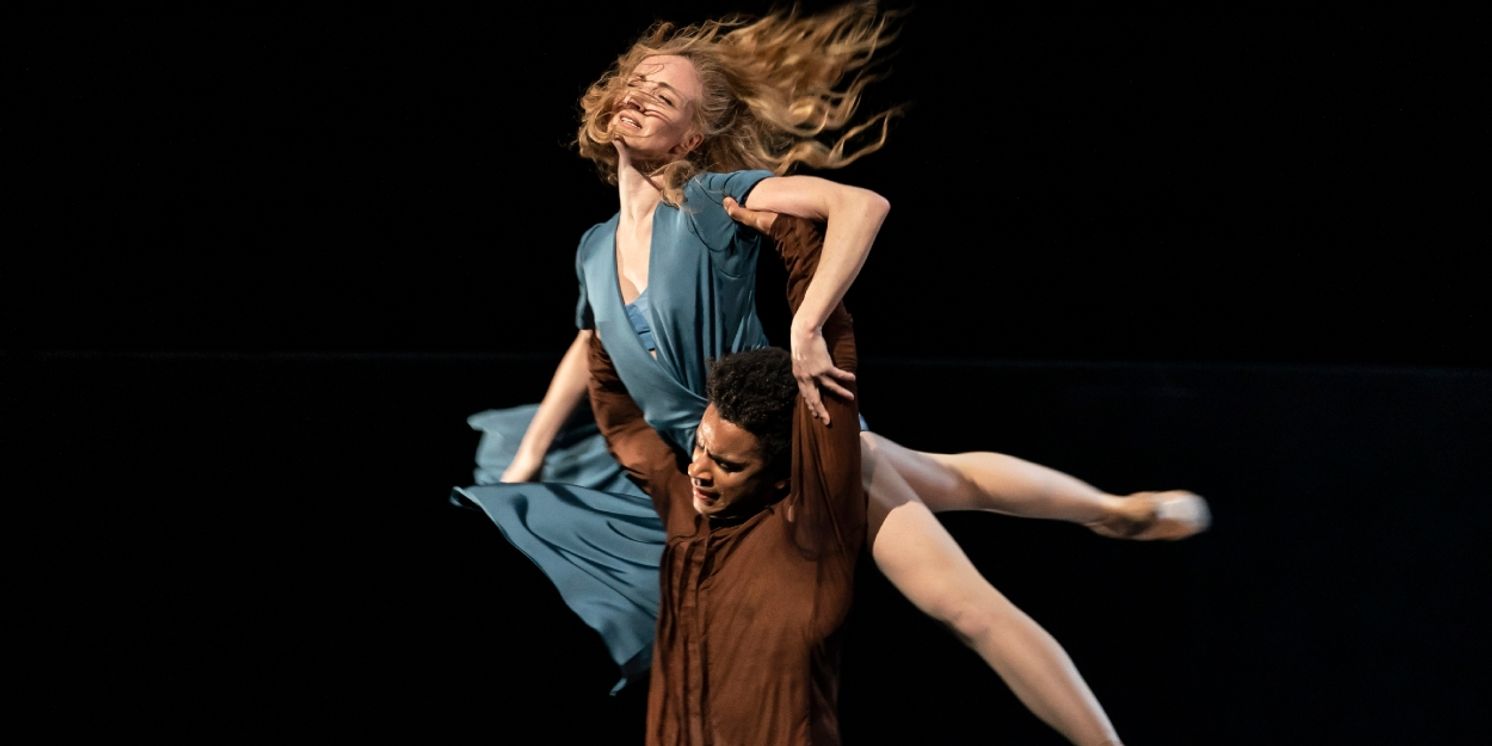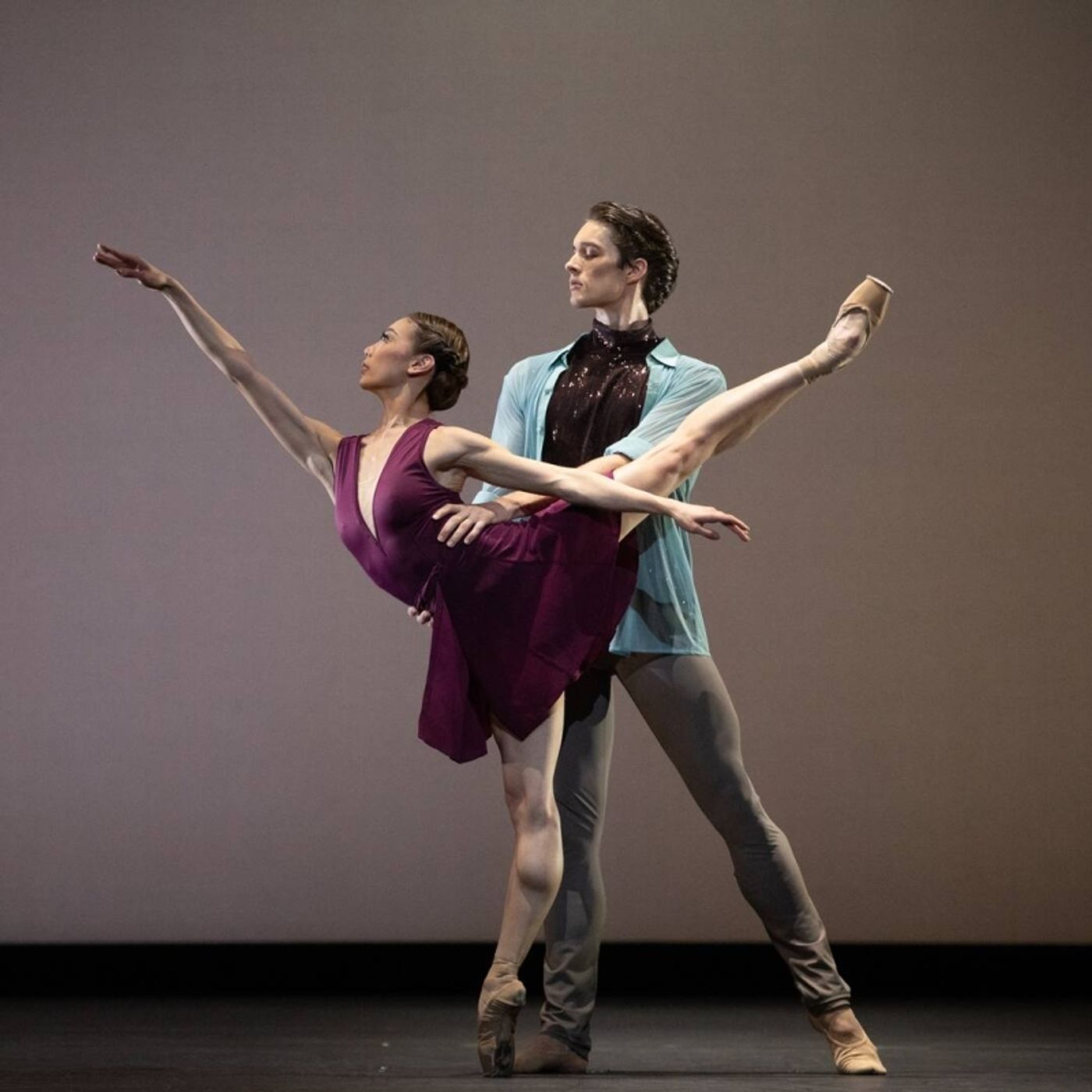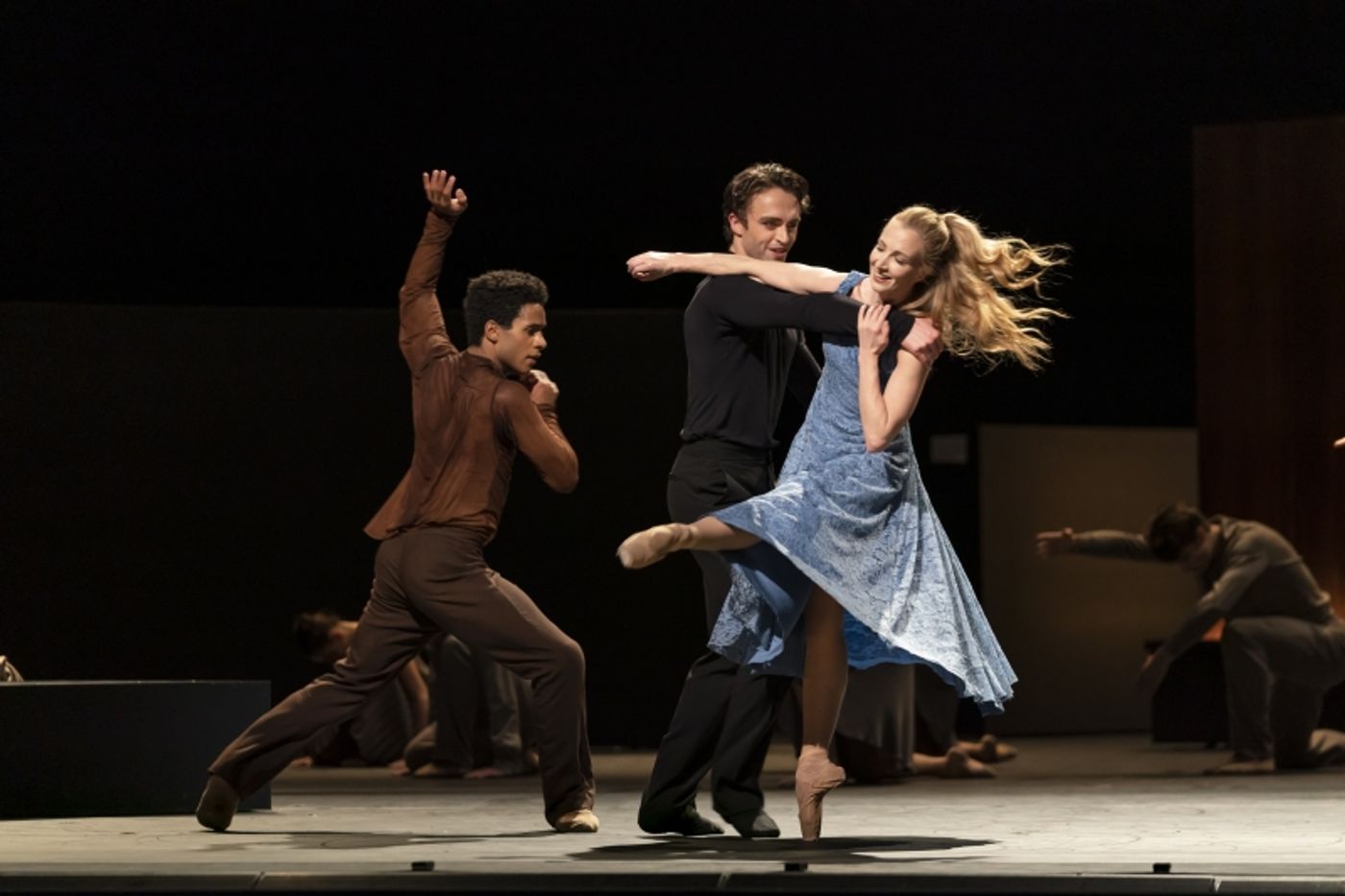Review: ANEMOI/THE CELLIST, Royal Opera House
The Royal Ballet presents revivals of two contrasting yet sublime one act ballets.

![]()
The Anemoi were mythological Greek wind gods. Choreographer and First Soloist of The Royal Ballet, Valentino Zuchetti's vision resonates with the very essence of the mythical wind gods, as his cast appear to share a number of qualities, namely swiftness, breeziness and a flowing quality of movement- embracing like the very lightness of the wind.
The exquisite lead dancers Mariko Sasaki, Lukas B. Brændsrød, Leticia Dias, Taisuke Nakao remain central to the piece, developing throughout in tribute to the seasons and taking on the nature of the compass points. The Tower of the Winds in Ancient Athens featured gods Kaikias, Apeliotes, Skiron and Lips. The four leads take on the qualities of the deities, in the form of dedication to their craft, passion and faultless dance dexterity.

The atmosphere of the piece is joyful with a nod to the nature of Summer, Autumn, Winter and Spring. The mood is expertly created by insightful lighting design by Simon Bennison. This is supported by subtle changes of the skyline, which involves the sun shining through taupe scenes, evolving to an indigo glow. The commitment of the cast of 16 is apparent, as the piece was created by Zucchetti to give an opportunity for the younger members of the company to thrive.
Zucchetti is quoted in explanation of his highly technical choreography, as a deliberate choice, so as to challenge and create a fresh, intricate and complex quality. Such is the vision that images are created in swirling gusts of circular motion, contrasting with movement in short straight lines, reminiscent of the hand of a clock ticking in time. Graceful Italian fouetté and beautiful Grand Jeté work contributed to the vision and energy of the piece.
The music by Sergey Rachmaninoff, widely considered one of the finest composers of his day, brings a warmth, but also complements playfulness during clever silhouette work, where the dancers take on a graceful woodland animal quality.
The abstract nature of Anemoi is ethereal and makes for an enthralling ballet.

The Cellist is a commission by the Royal Ballet for the Royal Opera House Main Stage by Choreographer Cathy Marston. Marston’s skills are a masterclass in clear balletic storytelling. Based on the subject of Jacqueline Du Pre, we become so invested in the life of The Cellist, expertly portrayed by dancer Lauren Cuthbertson, that we feel the story deeply.
We watch the development of The Cellist’s musical skill and devotion to The Instrument, played by dancer Marcelino Sambé. Sambé embodies the ‘human’ Stradivarius, as the spirit of the musical gift, all played with an ever-graceful presence of ‘lyricism, musicality and fluidity’. The love and care from the cellist’s mother played affectionately by Christina Arestis, spans the youthful period and marks the first life transition for the musician. The commitment to the learning of the instrument, requires the skill of a respected teacher to guide the learning to an elevated point.
Tension builds as the musical prodigy and her teacher 'The Conductor', powerfully played with gravitas and passion by Matthew Ball, develops into a relationship. The piece then explores the unsettling pressure of the three ‘beings’ in the relationship; The Cellist, The Conductor and The Instrument.

Marston’s choreography is awe-inspiring, beautifully creating mournful desire from The Instrument, who in his abandonment looks on and waits to be reunited with The Cellist. A series of perfectly clear pique turns from the ensemble, created a stunning vision of balance, whilst beautiful cabriole jumps landed lightly. The piece explored the condition of Multiple Sclerosis, which can affect the brain and spinal cord, causing a wide range of potential symptoms, including problems with vision, arm or leg movement, sensation or balance.
The deterioration of The Cellist’s health feels profoundly moving, with exhaustion, resistance and rejection being key elements. Notable moments are the clever use of costuming, in terms of the cardigan of The Cellist which links to familial love, which the Costume Designer Bregje Van Balen cleverly creates with a relatable sense of nostalgia. Also captivating is the casting of The Young Cellist played by Ayla Orsborn, which is both charming and exciting, in terms of the commitment of the Royal Ballet to embrace young talent in such a respected piece of ballet.
The Cellist explores complexities in relationships and reflects on how learning complicated new skills can be all consuming, whilst acknowledging how fleeting life is, when faced with medical conditions. It is an imaginative and thoughtful ballet.
Anemoi/The Cellist runs at the Royal Opera House until 3 November 2023.
Photo Credit: (c) 2020 ROH, Photographed by Bill Cooper.
Reader Reviews
Videos

